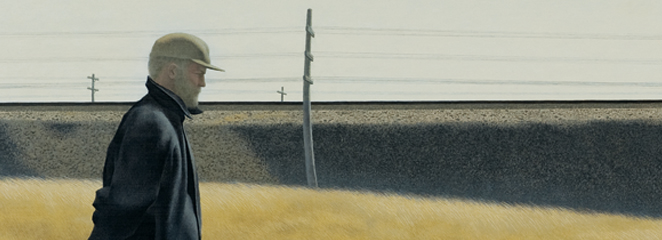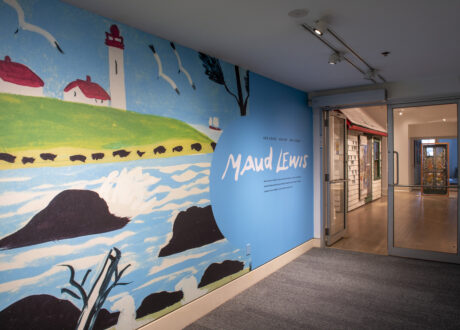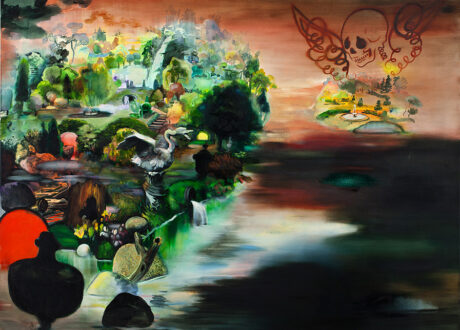

Alex Colville’s 90th birthday on August 24, 2010 is an excellent reason to celebrate the life and the art of one of Atlantic Canada’s most renowned artists. To mark the event, the Art Gallery of Nova Scotia is mounting an installation of select Colville works taken from the Gallery’s Permanent Collection.
Born in Toronto in 1920, Colville moved with his family to Amherst, Nova Scotia in 1929 and later studied art at Mount Allison University under Stanley Royle. Graduating in 1942, Colville joined the Canadian Army and served in Europe as a member of the War Art program. An extensive collection of his work from this time can be found at the Canadian War Museum. Following World War II, Colville taught art and art history at Mount Allison University from 1946 to 1963 before devoting himself full-time to his painting and printmaking. He has resided in Wolfville, Nova Scotia since 1973.
Several of Colville’s paintings are on continuous exhibition at the Art Gallery of Nova Scotia, including Ocean Limited, 1962; Three Girls on a Wharf, 1953; Dog in Car, 1999; and Studio, 2000. The ten prints and sketches chosen for this particular celebration span these works and both paintings and prints exhibit the heightened realism, eerie lighting, and dramatic, layered composition, which hints at a seething chaos and darkness kept in check by the careful structuring of the image for which Colville is known.
Preparatory sketches are an integral part of Colville’s painting process. The two sketches for Three Girls on a Wharf allow for the differences between the initial planning for the painting – the positioning of architectural elements, the levels of dress of each of the girls, as well as the fastidious plotting of geometry and space – and the end result to be examined.
Alex Colville’s subject matter is customarily chosen from his personal environment – his family (Sleeper, 1975; Fête Champêtre, 1984; Snow, 1969; and Sunrise, 1970), his pets (Artist and Cat, 1979), and the landscape near his home (Crow with Silver Spoon, 1972; Border Collie, 1972; and Heron, 1977). His works are highly representational reflections of a world that is both familiar and enigmatic; recognizing the importance of the ordinary, Colville is an expert at drawing out the often overlooked depth of the everyday. Experiencing one of Colville’s images invariably makes the viewer question what is happening in this particular moment in time, with vague, unsettling answers suggested in the complexly coded image.



